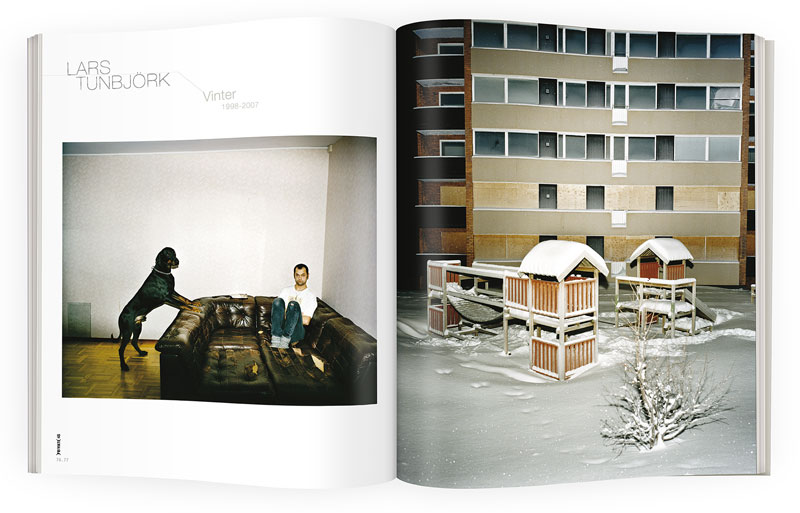Title: Mental Geography. Galerie VU’ § Publication: Autumn 2009 / Softcover / 84 pages / 21×26 cm § Photographers: Anders Petersen, Anne-Lise Broyer, Denis Darzacq, Hicham Benohoud, Jean-Christian Bourcart, Jeffrey Silverthorne, JH Engström, John Davies, Lars Tunbjörk, Laurence Leblanc, Léa Crespi, Mathieu Pernot, Michael Ackerman, Nicolas Comment § Introduction by: Galerie VU’.
PRIVATE 46 – Mental Geography – Galerie VU’
€10.00
Out of stock
Introduction
For more than 10 years, Galerie VU’ has been promoting photographers of various ages, nationalities and inspirations. This issue of PRIVATE magazine, which is dedicated to them, proves it. The portfolios presented here, as diverse as they are, have as a common denominator the notion of “mental geography”. Places, spaces and territories are considered, according to a double prospect – that of the artist and that of the world –, in their relationship to the spirit. A mental space is, first of all, a place that exists only in the mind of the photographer. The place – a building, a city, a region or a country – speaks then above all about the artist. The latter tries less to render an account of a geographical reality than to offer a voluntarily biased and incomplete representation, where he or she projects his or her sensibility, memories and imagination, personal mythologies or artistic and literary references. The place, by its strength of attraction or aversion, is invested by the artist who makes it the theater of his or her psychic functioning. These works, necessarily subjective, sometimes enigmatic, always very open, build geographies that eventually break through any territoriality, any local tie and any border, to find their coherence in a game of sensitive or intellectual correspondence, which connect the images between them. However, the notion of mental space also evokes the place which, by its nature or its characteristics, is a creation of specific psychic states. The place exerts then a mental influence on the individual as observed by the photographer. The most evident are the places of power or authority – a classroom for example – where one has to submit to a hierarchy and to assimilate conventions and values. But certain spaces, apparently more harmless, show themselves as oppressive. Following the example of these numerous contemporary anonymous, functional and normative non-places as public transportation, private housing estates or group housing. The artist seizes upon this daily alienation. When he or she underlines it, it is not to report it in a direct and documentary way. It is not to explain it. It is rather to make fun of it or make it a kind of symbol. But the artist also criticizes it or attacks it frontally. He or she then arouses reactions and behaviors that challenge standards and allows everyone to reaffirm one’s identity, integrity and freedom. (Galerie VU’)
Photographers
- Anders Petersen, From Back Home
- Anne-Lise Broyer, Au Roi du bois (Chap. 2)
- Denis Darzacq, Nu
- Hicham Benohoud, La Salle de classe
- Jean-Christian Bourcart, Traffic
- Jeffrey Silverthorne, Boystown, the perfume of desire
- JH Engström, From Back Home
- John Davies, Fuji City
- Lars Tunbjörk, Vinter
- Laurence Leblanc, Seul l’air. To live till death is not easy
- Léa Crespi, Brest
- Mathieu Pernot, Sans titre
- Michael Ackerman, Untitled
- Nicolas Comment, Est-ce l’Est ? (Berliner Romanze)
| Weight | 0.340 kg |
|---|
You must be logged in to post a review.











Reviews
There are no reviews yet.